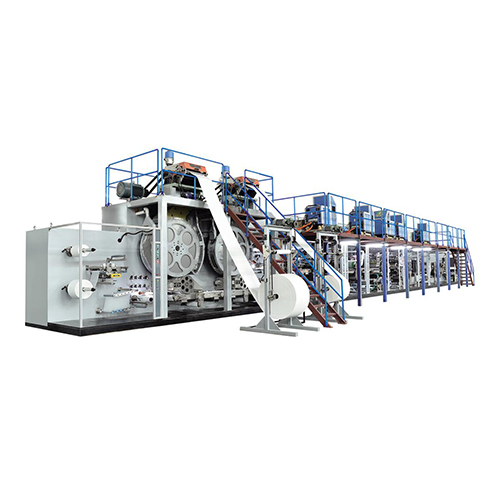Cloth diapers and disposable diapers differ in several aspects, including usage and maintenance.
Here are some key differences:
Reusability: Cloth diapers are reusable, while disposable diapers are intended for single-use. Cloth diapers can be washed and reused multiple times, whereas disposable diapers are discarded after each use.
Cost: Cloth diapers have a higher upfront cost since they require an initial investment to purchase the diapers and necessary accessories like inserts and covers. However, over time, cloth diapers can be more cost-effective as they can be reused multiple times, reducing the need for continuous purchases of disposable diapers.
Environmental Impact: Cloth diapers are often considered more environmentally friendly since they generate less waste. They can be washed and reused, reducing the amount of diaper waste sent to landfills. On the other hand, disposable diapers contribute significantly to landfill waste due to their single-use nature.
Absorbency and Leakage: Disposable diapers generally have higher absorbency compared to cloth diapers. They often contain superabsorbent polymers that can hold larger amounts of liquid. This can result in fewer leaks and a drier feel for the baby. Cloth diapers may require more frequent changes to maintain dryness and prevent leaks.
Convenience: Disposable diapers are generally considered more convenient since they are ready to use and require no washing or maintenance. Cloth diapers, on the other hand, require regular washing and drying, which can add to the caregiver’s workload. However, some caregivers find the convenience of cloth diapers worth the extra effort due to their long-term benefits.
Fit and Adjustability: Cloth diapers offer more customization options in terms of fit and adjustability. They often come with adjustable snaps or Velcro closures and multiple sizing options, allowing for a better fit as the baby grows. Disposable diapers, while available in different sizes, may not provide the same level of customization for fit.
Chemicals and Sensitivity: Disposable diapers may contain chemicals such as dyes, fragrances, and absorbent gels, which can potentially cause skin irritation or allergies in some babies. Cloth diapers, particularly those made from natural fibers, may be a preferred choice for babies with sensitive skin.
Laundry Requirements: Cloth diapers require regular washing and drying, which adds to the laundry routine. They may need pre-rinsing, soaking, or specific washing instructions to maintain their absorbency and longevity. Disposable diapers, on the other hand, eliminate the need for diaper laundry.
It’s important to note that both cloth diapers and disposable diapers have their advantages and disadvantages. China diaper manufacturing The choice between them depends on individual preferences, lifestyle, budget, and environmental considerations. Some parents even opt for a combination of both, using cloth diapers at home and disposable diapers when traveling or during certain situations.
How has the design and functionality of diapers evolved over the years?
The design and functionality of diapers have evolved significantly over the years, driven by advancements in materials, technology, and the understanding of baby care needs.
Here are some notable changes:
Absorbency: Diapers have become more effective in absorbing and containing moisture. The introduction of superabsorbent polymers (SAP) revolutionized diaper absorbency. SAP can absorb and lock away large amounts of liquid, keeping the baby’s skin dry and reducing the risk of leaks.
Shape and Fit: Diapers have been redesigned to provide a better fit and increased comfort for babies. They now feature elasticized waistbands, leg cuffs, and stretchable panels, allowing for a snug and secure fit that adapts to the baby’s movements.
Closure Systems: Diapers have transitioned from traditional pins to more convenient closure systems. Adhesive tapes or hook-and-loop fasteners (such as Velcro) are commonly used to secure the diaper in place, offering a more user-friendly and adjustable closure system.
Breathability: Improved breathability is a key feature in modern diapers. Breathable materials and designs promote air circulation, reducing the risk of skin irritation and enabling better temperature regulation.
Wetness Indicators: Many disposable diapers now include wetness indicators. These color-changing strips or patterns on the diaper’s exterior provide a visual cue to caregivers, indicating when the diaper needs changing.
Size Options: Diapers are available in a range of sizes to accommodate the changing needs of babies as they grow. This allows for a better fit and improved leakage prevention.
Eco-Friendly Options: With growing environmental concerns, eco-friendly diaper options have gained popularity. These diapers are often made from sustainable materials and incorporate biodegradable or compostable components, reducing their impact on the environment.
Diaper Pants: Diaper pants, also known as pull-up diapers, have become popular alternatives to traditional adhesive-tape diapers. They are designed to be pulled up and down like underwear, making diaper changes easier for active and older babies.
Specialized Diapers: Diapers have been developed to address specific needs, such as overnight diapers for extended protection during sleep, swim diapers for use in water, and diapers designed for premature infants or babies with sensitive skin.
Smart Diapers: With the rise of wearable technology, smart diapers have emerged. These diapers include sensors that can monitor a baby’s urine output, temperature, or even detect possible urinary tract infections. This technology aims to provide caregivers with insights into their baby’s health and well-being.
Overall, the design and functionality of diapers have evolved to prioritize comfort, convenience, and performance while incorporating eco-friendly and innovative features to meet the changing needs of both babies and caregivers.
